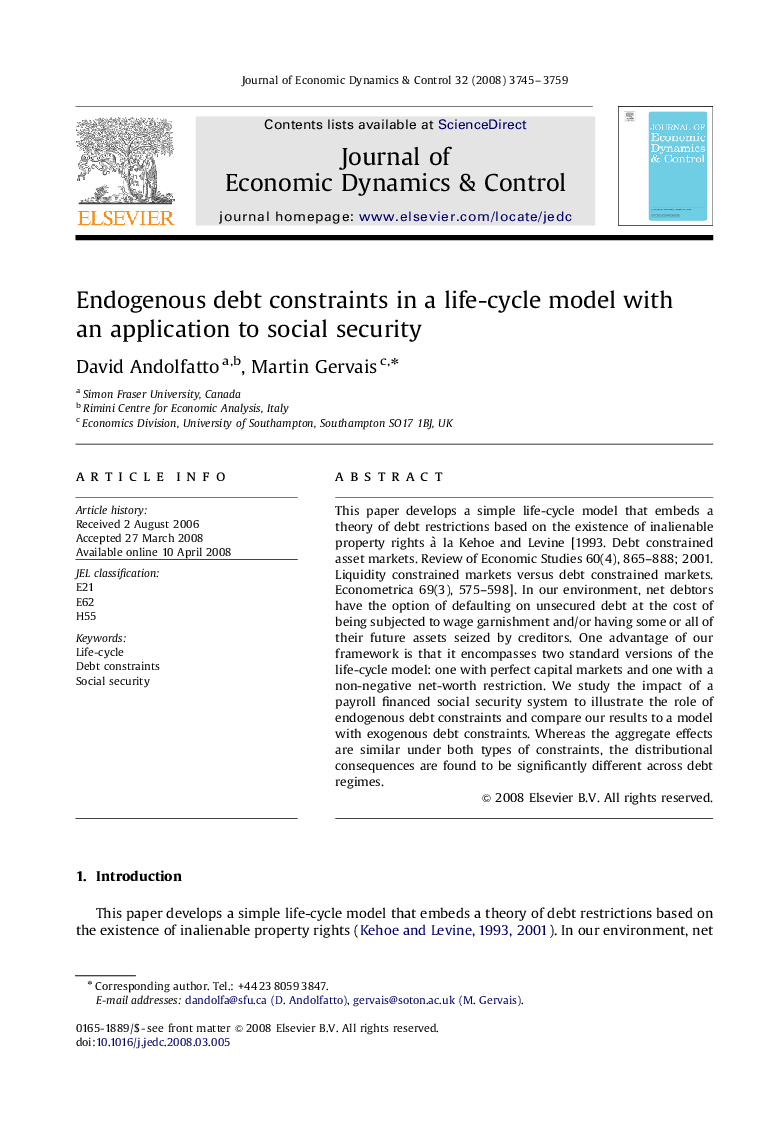| Article ID | Journal | Published Year | Pages | File Type |
|---|---|---|---|---|
| 5099782 | Journal of Economic Dynamics and Control | 2008 | 15 Pages |
Abstract
This paper develops a simple life-cycle model that embeds a theory of debt restrictions based on the existence of inalienable property rights à la Kehoe and Levine [1993. Debt constrained asset markets. Review of Economic Studies 60(4), 865-888; 2001. Liquidity constrained markets versus debt constrained markets. Econometrica 69(3), 575-598]. In our environment, net debtors have the option of defaulting on unsecured debt at the cost of being subjected to wage garnishment and/or having some or all of their future assets seized by creditors. One advantage of our framework is that it encompasses two standard versions of the life-cycle model: one with perfect capital markets and one with a non-negative net-worth restriction. We study the impact of a payroll financed social security system to illustrate the role of endogenous debt constraints and compare our results to a model with exogenous debt constraints. Whereas the aggregate effects are similar under both types of constraints, the distributional consequences are found to be significantly different across debt regimes.
Related Topics
Physical Sciences and Engineering
Mathematics
Control and Optimization
Authors
David Andolfatto, Martin Gervais,
